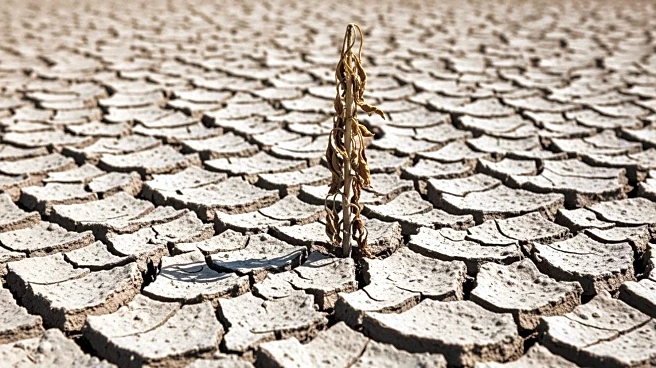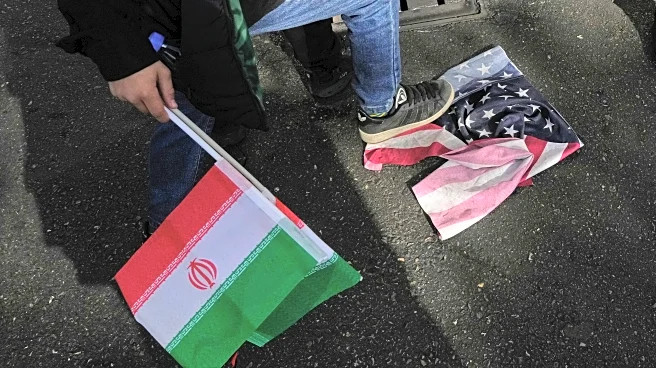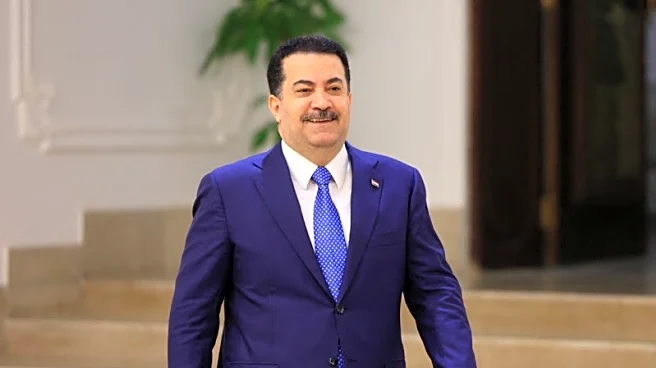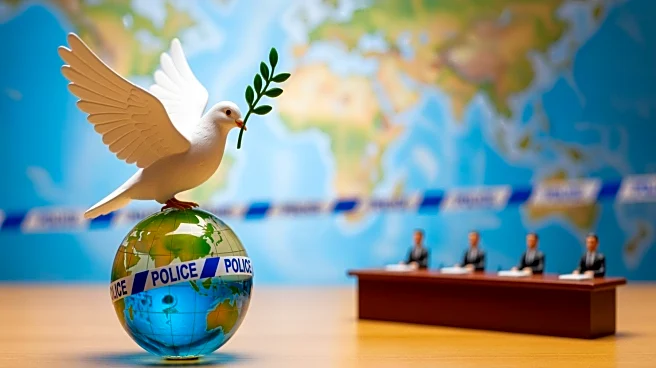What's Happening?
Iranian President Masoud Pezeshkian has issued a warning about the severe water shortage facing Tehran, which could lead to the evacuation of the city if rain does not fall soon. Tehran, with a population
of 20 million, is at the center of a national crisis exacerbated by economic turmoil, environmental collapse, and social unrest. The city relies heavily on five main dams, but rainfall has dropped significantly below seasonal averages, leading to drastically reduced reservoir levels. The Tehran Water Authority has reported that the capital's reservoirs are at their lowest point in a century, and the head of the authority warned that dam reserves could sustain the city for only two more weeks if the dry spell continues.
Why It's Important?
The water crisis in Tehran is part of a broader emergency affecting Iran, where years of declining rainfall, drought, and overuse of water reserves have left the country vulnerable. The semi-arid climate makes Iran particularly susceptible to drought, and the current situation has reached critical levels. Many provinces have seen reservoir capacities fall dramatically, leading to water rationing. Tehran's situation is the most visible example, but the shortage extends beyond the capital. The crisis highlights the urgent need for better management of water and energy resources, as well as long-term reforms and infrastructure upgrades.
What's Next?
Without substantial rainfall, authorities may impose strict rationing across Tehran and other major cities. Contingency plans include phased restrictions and potential relocation if reservoirs continue to fall. Officials emphasize that immediate conservation is insufficient, calling for long-term reforms, infrastructure upgrades, and tighter control of agricultural and industrial water use. The situation demands swift action to prevent one of the most severe urban water shortages in Tehran's history.
Beyond the Headlines
The crisis in Tehran underscores the complex interplay between environmental challenges and political factors, including internal mismanagement and international sanctions. The situation raises ethical questions about resource allocation and the responsibility of governments to ensure sustainable water management. It also highlights the potential for social unrest and economic instability as communities face increasing scarcity.













